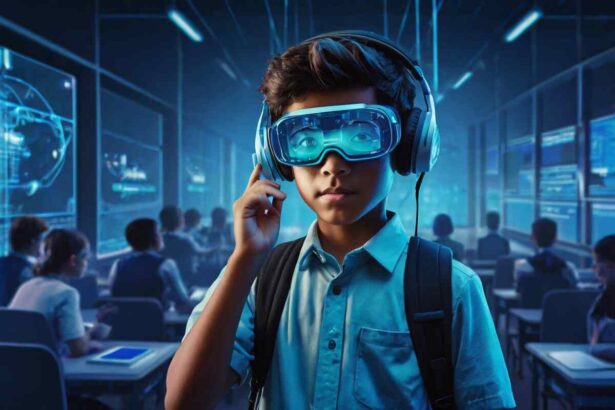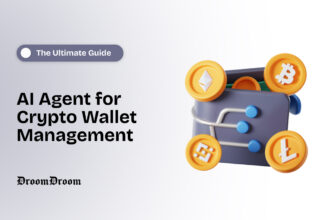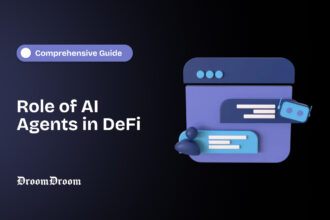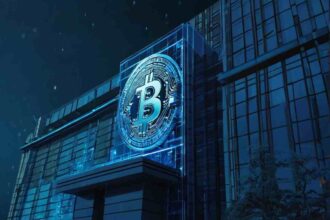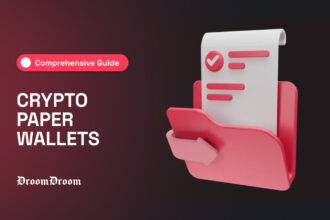Imagine being able to learn anything, anywhere, anytime, with anyone, in any way you want. The ability to explore the world, the past, the future, and even your imagination without leaving your home or being in a confined space called a ‘classroom’? The possibility to create, share, and experience amazing things with people of the same pursuit, from different cultures, backgrounds, and interests? These and many more are the ways the metaverse is shifting the paradigm of the education sector globally. With lots of opportunities and benefits, it is, however, also not without some inherent threats and issues. This article highlights 8 amazing ways that the metaverse is reshaping the narrative in education today, and some imminent challenges it faces.
- Metaverse in Education
- 8 Ways Metaverse Education is Transforming Teaching And Learning Globally
- Customized Learning Experiences
- Access to Experts And Resources
- Gamification of Learning
- Enhanced Collaboration
- Career Preparation
- Virtual Reality Field Trips
- Accessibility For Disabled Learners
- Virtual Labs And Simulations
- The Metaverse in Action: 2 Case Studies
- Challenges and Future of Metaverse Education
- Closing Thoughts
The metaverse is transforming education as we know it through offering customized learning experiences, access to experts and resources, gamification of learning, enhanced collaboration, career preparation, virtual reality field trips, accessibility for disabled learners, and lastly, virtual labs and simulations.
The Metaverse, a term used to describe a virtual reality space where users can interact with computer-generated environments and with other users, in the form of avatars, has been garnering a lot of popularity in recent years. It is perceived as an extension of the internet that transforms our 2D experience into an immersive 3D virtual world. While it’s often associated with gaming and entertainment, mostly because of its ‘virtual’ nature, the Metaverse holds immense potential to revolutionize education.
According to a report by Statistica, by 2023, the Metaverse in education market is expected to be worth US$1.9bn. The report forecasts an increase of 43.76% annually from 2023 to 2030, which will result in a market value of US$24.7bn by 2030. It states that the United States is the country leading the charge in terms of market value, with a projected value of US$757.6m in 2023, and further speculates that the Metaverse Education market is expected to have 104.6m users by 2030.
In essence, this report goes to show that metaverse in education, which can co-exist with real-world learning, is the next big thing, and the best part is that it is not going anywhere, anytime soon. It has come to stay.
Owing to these developments, the education sector of various nations of the world is currently leveraging the versatile and promising potentials of the Metaverse to take teaching and learning to the next tier.
Metaverse in Education
The metaverse is not a new concept. It was first mentioned in a science fiction novel called Snow Crash by Neal Stephenson in 1992. Since then, many books, movies, and games have depicted different versions of the metaverse, such as Ready Player One, The Matrix, and Fortnite. Fast forward to the present day, the metaverse is not just fiction anymore. It is becoming a reality, thanks to the rapid development of technologies, such as virtual reality (VR), augmented reality (AR), blockchain, artificial intelligence (AI), and cloud computing.
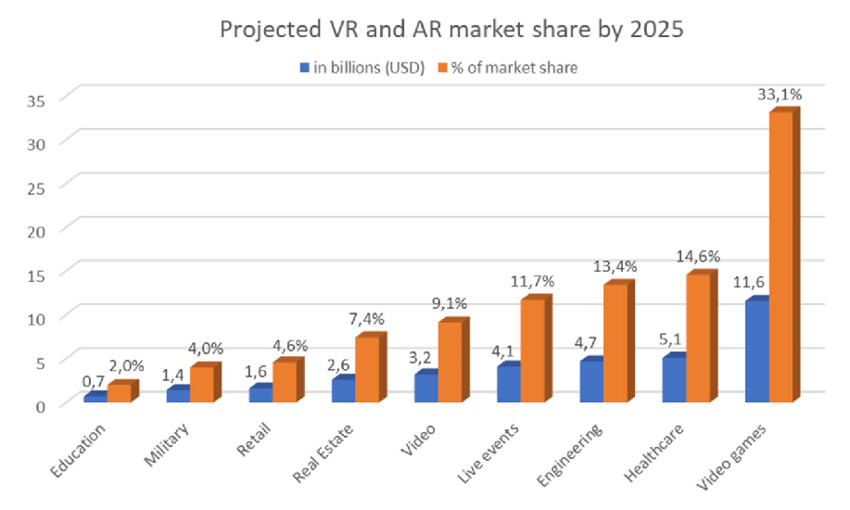
Image Source: Researchgate
Metaverse in education, therefore, speaks of a virtual world that exists side-by-side with the real world, where tutors and learners can interact with various subjects and activities using devices such as virtual reality (VR), augmented reality (AR), smartphones, or computers in an immersive virtual space, that promises multifaceted possibilities ana bridges many teaching and learning gaps.
8 Ways Metaverse Education is Transforming Teaching And Learning Globally
So far, we have established that metaverse education goes beyond traditional classroom settings, allowing students and educators to engage in customized, immersive learning experiences, collaborate globally, access experts and resources, and explore virtual environments. And by leveraging these certain new technologies, like the VRs, ARs and AIs, the Metaverse is creating a new frontier for learning.
That said, Here are 8 amazing ways metaverse in education is changing how we teach, learn, and collaborate.
Customized Learning Experiences
One of the most exciting aspects of the Metaverse in education is its ability to offer personalized and adaptive learning experiences that cater to students of different ages, levels, interests, and needs. Moreso, metaverse education can support different learning styles, from visual to auditory to kinesthetic, to social, and thus it offers a more ‘see-touch’ and interactive way of learning. Beyond that, it can equally provide instant feedback, guidance, and recommendations based on the student’s performance, preferences, strengths, and weaknesses as well as their goals. Metaverse education is indeed a leveler of learning opportunities.
Customization in the Metaverse extends beyond the personalization of avatars–which are the user’s virtual selves. It also allows educators to tailor the virtual environment to meet specific learning objectives. For example, in a history lesson, students can virtually visit historical sites–like the great pyramids in Egypt, or the Olumo Rock (‘hanging rocks’) in Nigeria–interact with artifacts, and engage in simulations that bring the past to life. This level of customization piques the curiosity and enables students to develop a deeper understanding of complex concepts.
This is the best way to learn. In fact, studies indicate that immersive technologies like virtual reality (VR) have the potential to enhance memory retention, boost motivation, and elevate classroom participation among students. For individuals facing challenges in conventional classroom settings, these innovative technologies offer an alternative pathway to academic success.
Organizations such as Tech Row have actively engaged in immersive learning which is the integration of virtual reality into classrooms, and allows students to experience virtual trips to destinations like Pluto, Antarctica, Machu Picchu, and beyond!
Access to Experts And Resources
Through virtual lectures and workshops, the Metaverse breaks down geographical barriers, providing students with access to experts in their fields of study, and hands-on learning resources that may not be readily available in their local communities.
What does this mean for students in remote areas or underserved communities? This means that the Metaverse opens up a gateway to knowledge and expertise that might otherwise be ordinarily out of reach for them. The metaverse can connect these students and teachers with mentors, tutors, peers, and professionals from different fields and locations all over the globe.
Metaverse in education also offers them access to rich and immersive content, such as 3D models, simulations, animations, videos, podcasts, and books. By connecting learners to a global network of resources, metaverse education empowers them to explore diverse perspectives and expand their horizons. This is no small fit!
Metable, for instance, prides itself as the first-ever metaverse dedicated to education. Now you can buy virtual land and build a virtual school.
In a more practical sense, take for example, or imagine that you want to learn about ancient Egyptian civilization. In the metaverse, you can visit a virtual museum in Egypt, where you can see and touch the artifacts, hieroglyphs, and mummies. You can also talk to a virtual guide who can explain the history, culture, and religion of ancient Egypt. You can also join a virtual tour where you can explore the pyramids, the sphinx, and the Nile River. You can equally chat with a real archaeologist who can share their latest discoveries and insights. The possibilities are just endless and the access limitless.
Gamification of Learning
A third way that the metaverse education is improving learning is by incorporating elements of games, such as goals, rules, challenges, rewards, and feedback. Gamification is a powerful tool for engaging learners, and the Metaverse takes gamification to the next level. What the Metaverse does is that by incorporating game elements into educational experiences, it transforms learning into a fun, user-centric, and interactive process. Students can earn rewards, level up, and unlock new content as they progress through their educational journey.
In metaverse education, students can participate in virtual quests, solve puzzles, and compete with their peers in a safe and immersive environment, while learning at the same time. Gamified learning keeps students’ motivation peaked, enhances their problem-solving skills, and encourages active participation, good team spirit, and collaboration.
Enhanced Collaboration
Collaboration is a vital skill in the modern world, and the metaverse in education fosters collaboration among students and educators. It offers collaborative learning activities, such as group projects, discussions, debates, presentations, and peer reviews, in a supportive learning environment that nurtures creativity and stimulates innovation.
Whether they are in the same virtual classroom or on opposite sides of the world, learners can work together on assignments or projects in real time. Educators can provide the needed feedback and guidance, which ensures that students stay on track and meet their set goals or the specific objectives of the subject topic being explored.
Finally, metaverse education or learning also facilitates communication and interaction, such as through voice, text, gestures, and avatars. Students get to exchange ideas, share resources, and learn from each other’s perspectives. This collaborative approach prepares students for 21st-century future careers that require virtual teamwork and remote collaboration.
Career Preparation
A fifth way that the metaverse can prepare students for their future careers is by exposing them to various industries and professions.
As the world becomes increasingly digital and remote work becomes more prevalent, students with experience in the Metaverse gain a competitive edge in the job market. Metaverse education equips learners with valuable skills such as virtual collaboration, digital literacy, and adaptability to new technologies.
By engaging in virtual team projects and using virtual tools, students get to develop the abilities needed to thrive in the 21st-century workplace. The Metaverse prepares them for careers that involve remote work, virtual meetings, and collaboration across borders.
Virtual Reality Field Trips
Field trips are an integral part of education, but logistical challenges often limit their frequency and accessibility, especially to underprivileged students in low-budget schools or campuses. Metaverse education addresses these challenges by offering virtual reality field trips. This way, students can visit museums, art galleries, historical sites, and even other countries without leaving the comfort of their homes or classrooms.
This opens up the door to interact with the local communities and cultures anywhere in the world, and learn about their traditions, beliefs, and challenges.
These virtual experiences can tremendously enhance student’s understanding of the world and make learning more memorable, in no small way.
Accessibility For Disabled Learners
Another redefining breakthrough of metaverse education is the potential to make education more accessible for learners with disabilities–ranging from the blind, deaf and dumb, paralytics, mongoloids, and autistics. Virtual classrooms eliminate physical barriers and allow these categories of students with mobility issues or other disabilities to participate fully in educational activities. Disabled learners can also engage with their peers, interact with teachers, and access educational resources without leaving their homes.
In essence, the metaverse unveils new possibilities for inclusive education, so that learners of all abilities have equal opportunities to learn and thrive, by providing accessible learning environments, and thus, promoting diversity and inclusivity in education. Inherently, like a double-edged sword, this goes further to solve the social problem of bullying, body shaming, and victimization prevalent among teens and campus students.
Virtual Labs And Simulations
Finally, as pointed out by research earlier cited in this article, practical learning experiences are essential for students in fields like science, engineering, arts, and healthcare. Sadly, conducting experiments in traditional labs can be costly, time-consuming, or even dangerous, in some cases. The Metaverse solves these challenge by providing virtual labs and simulations.
In virtual labs, students can perform experiments–just as easily as in the real world–manipulate variables, and observe outcomes in a safe and controlled environment.
They can practice surgical procedures, conduct chemistry experiments, or explore physics principles without the need for physical equipment or specialized facilities. From neutralization reactions in chemistry to conduction, convection, and radiation processes in physics to watching the biological growth of plants or fertilization in sexual reproduction of animals, in biology. Metaverse in education immerses learners into these adumbrated realms, exciting their sensory perception and stimulating brain motor neurons and receptors for effective, lifelong learning.
Simply put, virtual simulations enable students to gain practical experience and cost-effectively develop critical skills needed for life and industry.
The Metaverse in Action: 2 Case Studies
As more and more research pours into the R&D of large corporations and NGOs, annually, to understudy the metaverse, its market potentials, and how best to position and take advantage of it, new case studies that demonstrate the transformative potential of the Metaverse in education keeps emerging. Let’s explore two examples here:
Virtual Reality Science Labs
Virtual reality is being used to provide students with hands-on science lab experiences. Students get to perform experiments, manipulate variables, and observe outcomes in a virtual environment, enhancing their understanding of scientific concepts.
Virtual History Tours
Virtual reality allows students to visit historical sites and experience different periods in history while in fixed locations. They can explore ancient civilizations, witness historical events, and interact with historical figures, making history come alive, like never seen before.
Challenges and Future of Metaverse Education
As earlier hinted, while the Metaverse offers exciting possibilities for education, it also presents challenges and threats that need to be addressed. Some of the key threats and challenges include:
Technological Infrastructure
Metaverse education requires a robust technological infrastructure, including high-speed internet and VR/AR equipment. This may be too expensive, not readily available, or too advanced for local tutors without the technical know-how to effectively deploy and utilize them in class.
Albeit, ensuring equal access to these resources is essential to prevent further educational inequalities.
Digital Literacy and Training
Navigating the Metaverse effectively requires digital literacy and training for both students and educators, as pointed out earlier. Adequate support and training programs should be provided to ensure the successful integration of Metaverse technologies in the classroom.
Data Privacy and Security
The Metaverse generates vast amounts of data on student interactions and behavior. This could be a threat. It is crucial to prioritize data privacy and security to protect students’ sensitive information and maintain trust in the educational system.
Despite these challenges, the future of Metaverse education is promising. Advancements in AI, VR/AR technologies and connectivity will continue to enhance the immersive and interactive nature of the Metaverse, creating endless possibilities for education.
Cyberbullying
Another worrisome threat to learning in the metaverse is the possibility of harassing, threatening, or intimidating someone in the virtual space. It may even deteriorate to the use the metaverse to send, post, or share harmful content to cause distress, humiliation, or harm to the target. The emotional and psychological consequences of these further underscore the need for privacy and data protection in this virtual world.
The metaverse is still a developing and evolving phenomenon that requires careful and responsible use and management. As such, students, teachers, and educators need to be aware of the potential risks and benefits of the metaverse and to adopt ethical, critical, and creative approaches to learning and teaching in the metaverse.
Closing Thoughts
The Metaverse is transforming education, offering immersive and interactive learning experiences that go beyond traditional classroom settings. Customized learning, access to experts and resources, gamification, collaboration, virtual field trips, and enhanced accessibility are just some of the ways the Metaverse is revolutionizing education.
While challenges exist, the future of Metaverse education holds tremendous potential to create a more inclusive, engaging, and personalized learning environment for students around the world.
The metaverse is not just a technology, but a culture, a community, and a vision. It is a new way of learning, teaching, and collaborating that can open up new possibilities and opportunities for education. It is also a new way of living, playing, and creating that can inspire and empower us to explore, discover, and express ourselves. The metaverse is not a distant or imaginary future, but a present and real one. The metaverse is here, and it is transforming education as we know it. Are you ready to join the revolution of metaverse education now?
